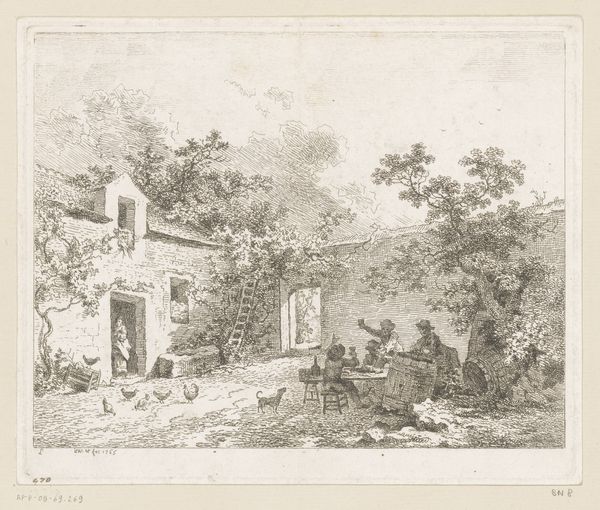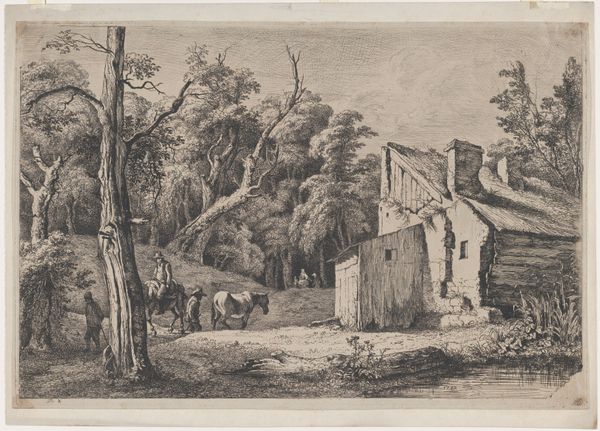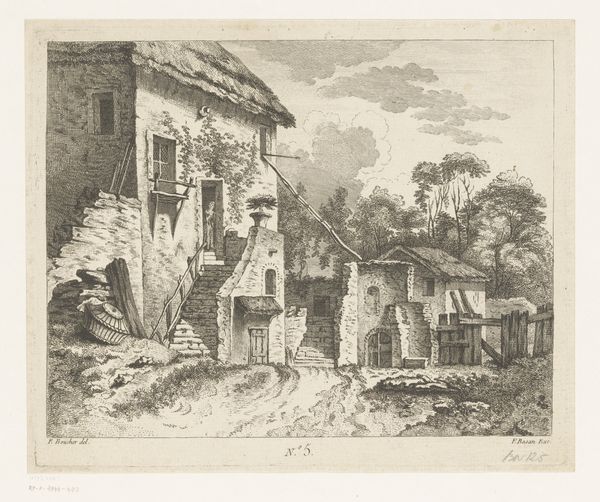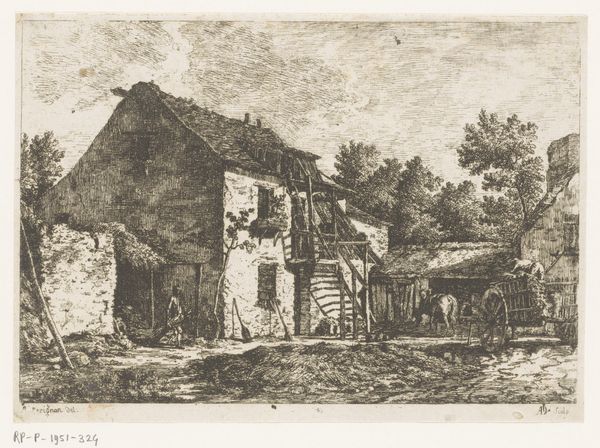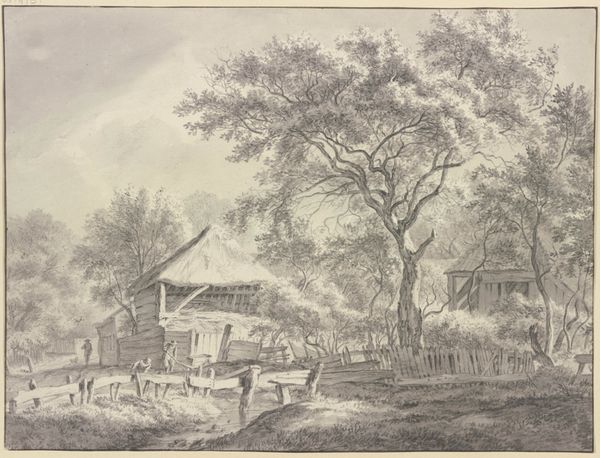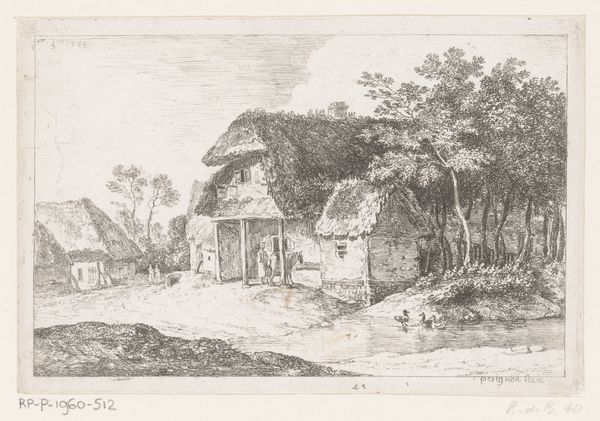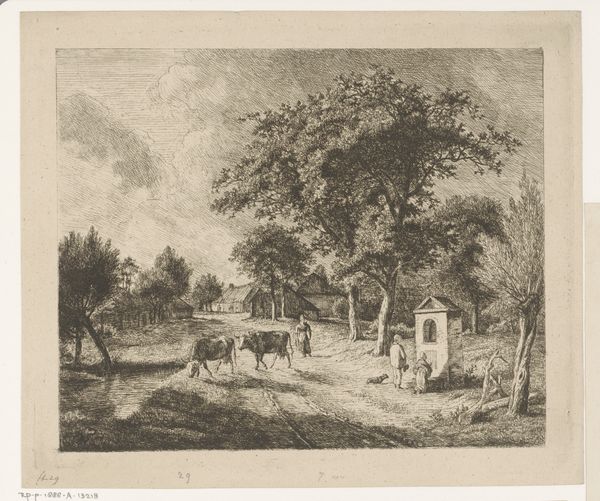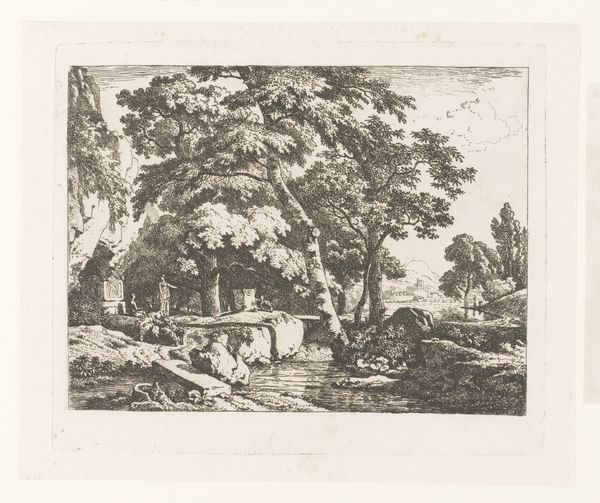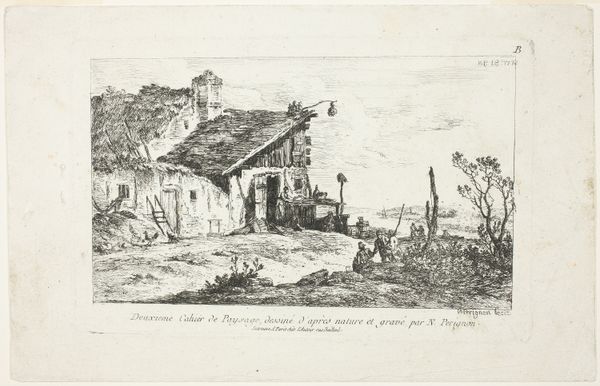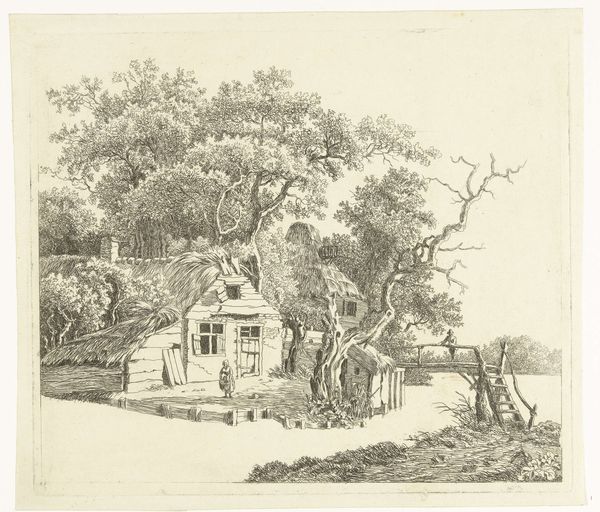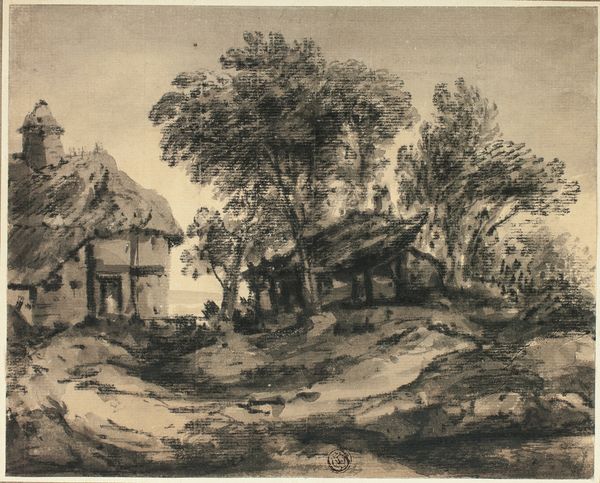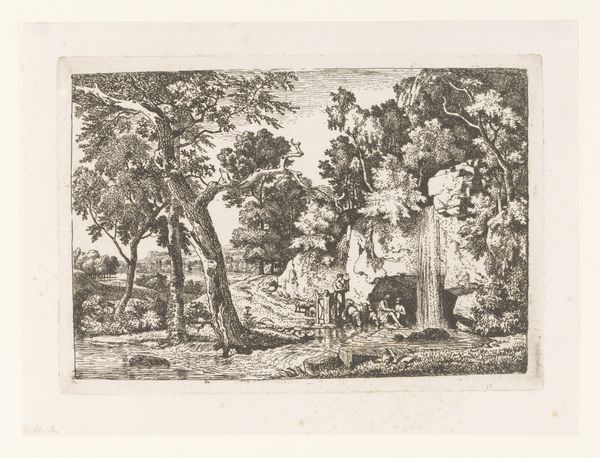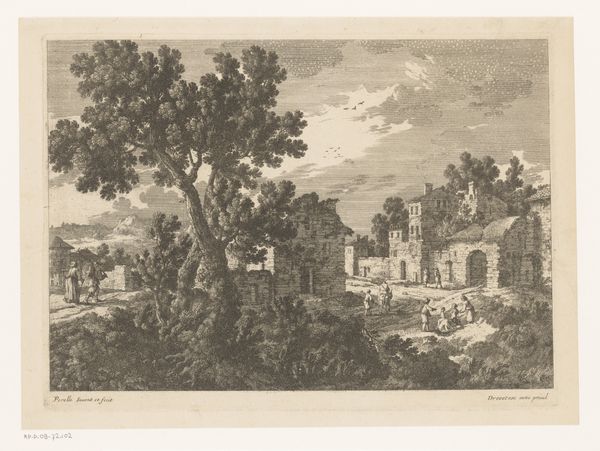
drawing, print, etching, architecture
#
drawing
# print
#
etching
#
landscape
#
figuration
#
pencil drawing
#
romanticism
#
architecture
Dimensions: Sheet: 8 11/16 × 12 13/16 in. (22 × 32.5 cm)
Copyright: Public Domain
Editor: This is "The Little Hermitage," a 1793 etching by Jean Jacques de Boissieu, currently residing at the Met. It's a peaceful landscape, but something about the decaying architecture gives it a melancholy feel. What do you see in this piece? Curator: This print reflects the late 18th-century Romantic fascination with ruins, particularly within the context of political and social upheaval in France. We need to ask, what did "nature" represent to those commissioning and consuming these images, given the political turbulence of the era? Boissieu’s choice of etching as a medium, allowing for detailed lines, reinforces the detailed observation, and thus the perceived 'truthfulness' of the scene. How does the placement of figures within the landscape contribute to this understanding, in your view? Editor: I notice they are diminutive and seem very humble; maybe it reflects the power of nature over people and their structures. Does the 'hermitage' concept connect with any philosophical ideals of the time? Curator: Exactly. The figure of the hermit was romanticized, representing withdrawal from corrupt society into a purer, simpler existence within nature. Boissieu is playing with those ideas but note how this plays with power: who can afford to withdraw? Who has that luxury? Also, consider the implied audience, likely wealthy urban dwellers who idealized rural simplicity. This image might be less about 'truth' and more about constructing an appealing fiction, one that perhaps elides the realities of rural poverty at the time. Editor: So, it's less an objective portrayal and more of a commentary on societal desires and anxieties viewed through a Romantic lens. Curator: Precisely. Art is never created in a vacuum. Reflecting on the role institutions such as the Met play in shaping our perception of this artwork now also encourages reflection on our present desires and anxieties. Editor: I’ll never look at a landscape the same way again. Thanks! Curator: A fruitful conversation indeed.
Comments
No comments
Be the first to comment and join the conversation on the ultimate creative platform.
